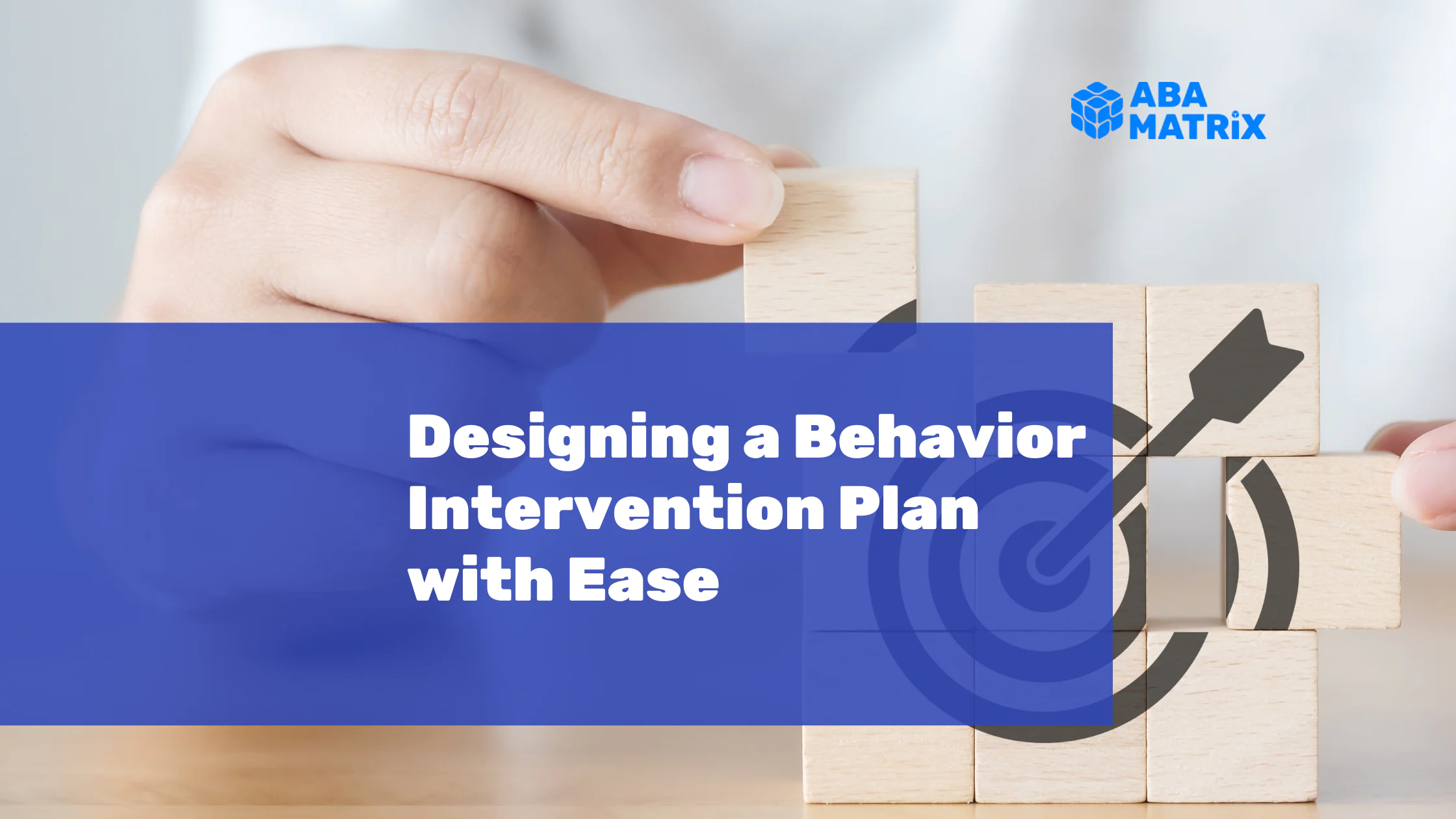In Applied Behavior Analysis therapy (ABA Therapy), strategic methods are implemented to support children with autism effectively. However, given that not everyone has the exact needs, there are alternatives in which every person can reach their individual goals according to their unique needs. To accomplish this, a method known as a Behavior Intervention Plan is put in place.
Behavior Intervention Plan, also known as BIP, is an individualized program created to improve or eliminate specific behaviors of concern and teach new skills. It is utilized primarily to reduce problem behaviors that may interfere with the patient’s daily functioning while promoting the development of more appropriate and desirable behaviors.
Putting together a plan: An effective BIP
Designing a BIP is determined by the results of the Functional Behavior Assessment. However, writing a behavioral intervention plan typically consists of the following:
- Setting goals
- Defining behaviors
- Behavior assessment
- Strategies and interventions
- Data collection
- Progress monitoring
- Plan modification
First steps first: Running a Functional Behavior Assessment
Before a BIP is put in place, a Functional Behavior Assessment (FBA) should be thoroughly conducted for best practice. While it is not legally required in some states, other states, such as New York and New Jersey, have specific regulations pertaining to applying FBA in different settings. Additionally, the IDEA (Individuals with Disabilities Education Act) requires that FBAs are conducted before designing a BIP. An FBA (Functional Behavior Assessment) involves the collection of data that provides evidence to form a hypothesis necessary to move forward with a BIP. Then, the information gathered by an ABA professional, such as a BCBA, BCaBA, RBT, or qualified professional, is classified into Direct and Indirect Assessments.
Direct Assessments
Consists of gathering and recording information in various common and structured settings across different times. The data collector documents events and specific triggers that occurred before and after. Other factors recorded during direct assessments are:
- ABC Data– (Antecedent-behavior Consequence) documents the different environments and times in which the behavior occurred to help identify and spot specific behavioral patterns.
- Recording the length of time, the behavior occurs– to understand the intensity of the behavior.
- Frequency– to count the number of times the behavior happened in a given timeframe.
- Latency– to help determine in which specific periods of a given timeframe the behaviors are displayed. These events are then put into smaller buckets to analyze each interval and determine the duration of antecedents and triggers.
Indirect Assessments
It involves collecting information from the people interacting daily with the person displaying the behavior under consideration. In this assessment, a review of past and current records of the person can include:
- Records review– analyze past and current documents such as academic reports, previous assessments, and other records that show the person’s behavior history.
- Interviews– with family members, guardians, teachers, and individuals who have witnessed the person’s behavior to gain a deeper understanding and context concerning the behavior.
- Questionnaires– quantify and standardize the frequency and intensity when the behavior happens.
Untangling Data for Successful BIP Implementation
As mentioned before, running an FBA is considered best practice within the ABA field and is also required in academic settings before putting together an effective BIP. However, running one doesn’t necessarily mean it will automatically be approved for implementation. In fact, there are several reasons Behavioral Intervention Plans don’t get approved to be implemented with a patient. The number one cause is insufficient data that validates the need to execute the plan. The lack of data often leads to inaccurate behavior analysis resulting in inappropriate intervention plans that lead to unsuccessful proposals.
Oftentimes, it’s not the accuracy of the data collected but the inaccuracy of how the data is presented. A tool to streamline data collection and reporting is essential for Applied Behavior analysts to gather information to complete the FBA and ease the Behavioral Intervention Plan creation and implementation with detailed targeted strategies to manage and modify the person’s behavior effectively.
With automated tools tailored to each practice’s needs, ABA analysts and technicians can be more efficient and organized in the FBA data recording. Equally important, ensuring that the data collection platform aligns with ethical guidelines and is HIPAA compliant is crucial to managing the data with confidentiality.
Discover how ABA Matrix streamlines data collection, analysis, and reporting with graphing while tailoring the tools to the unique needs of your practice, whether you are a solo practitioner, startup, or large clinic.
